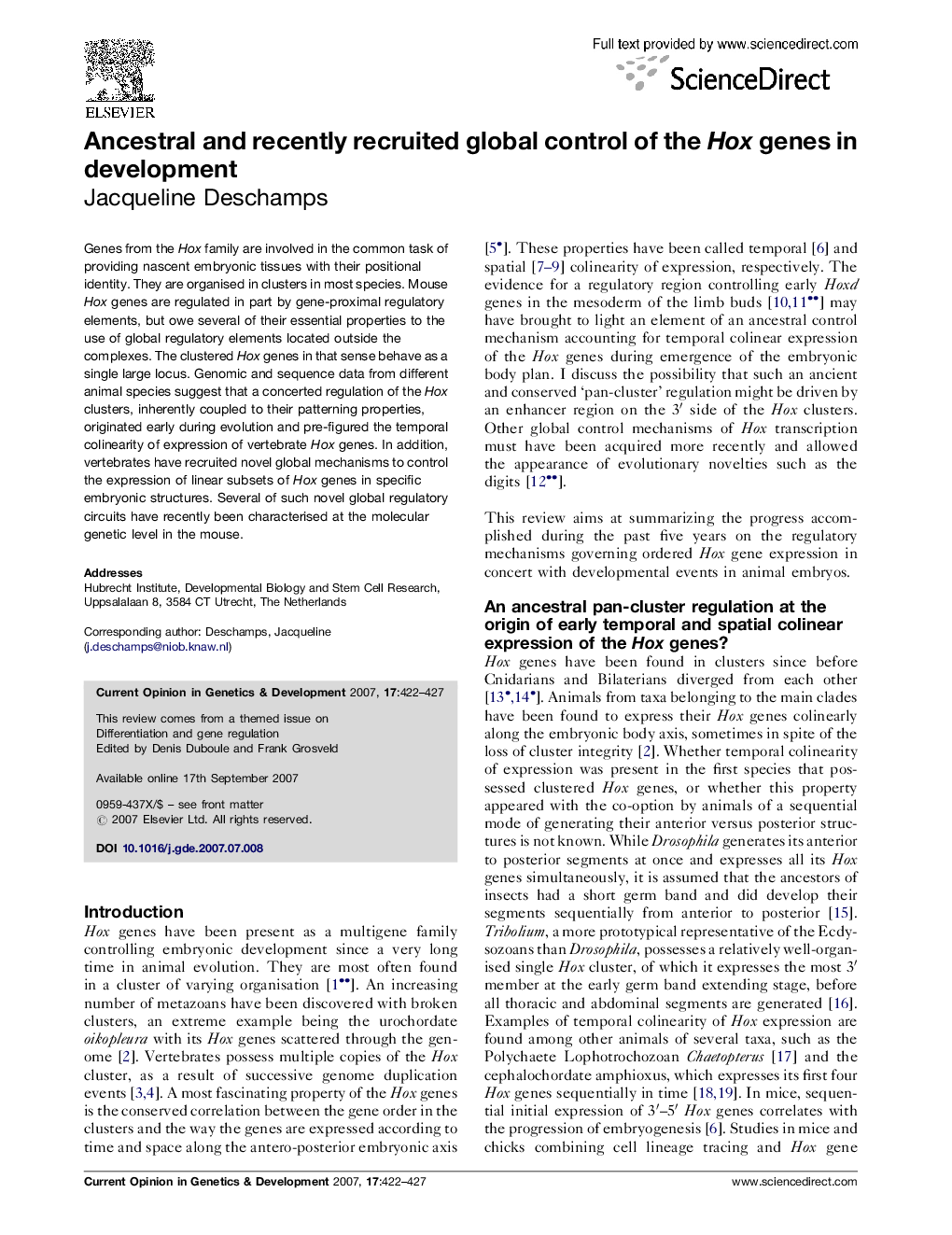| Article ID | Journal | Published Year | Pages | File Type |
|---|---|---|---|---|
| 2785174 | Current Opinion in Genetics & Development | 2007 | 6 Pages |
Genes from the Hox family are involved in the common task of providing nascent embryonic tissues with their positional identity. They are organised in clusters in most species. Mouse Hox genes are regulated in part by gene-proximal regulatory elements, but owe several of their essential properties to the use of global regulatory elements located outside the complexes. The clustered Hox genes in that sense behave as a single large locus. Genomic and sequence data from different animal species suggest that a concerted regulation of the Hox clusters, inherently coupled to their patterning properties, originated early during evolution and pre-figured the temporal colinearity of expression of vertebrate Hox genes. In addition, vertebrates have recruited novel global mechanisms to control the expression of linear subsets of Hox genes in specific embryonic structures. Several of such novel global regulatory circuits have recently been characterised at the molecular genetic level in the mouse.
